I talked about this same topic this week on episode 50 of the podcast, but I wanted to dig a little deeper into the subject of strategically ministering to the people in our lives by utilizing texting, phone calls, and more.
Every believer in Jesus Christ is called to be a minister. While some, like pastors, are called to a special ministry, their role is not to do all on the ministry, but “to equip the saints for the work of ministry,” (Ephesians 4:12). Every saint is a minister. But what does that look like especially in times like these?
Our individual ministries will vary depending on our spiritual gifts (Romans 12:6–8). But one thing will be consistent, ministry always involves loving others, especially those in the body of Christ (Galatians 6:10). Much of this ministry requires communicating with others—an encouraging word, an admonition, a quoted Scripture—these are all acts of communication.
But how do we strategically fulfill this ministry of love and communication (especially when we can’t always see people face-to-face)?
In other words, What’s your plan for personal ministry?
If your goal in life is to live a productive life for God’s glory, a big part of that is in how you use your spiritual gifts to minister in Christ’s church.
How can we approach this call strategically, taking full advantage of all of the blessings we have through technology while not letting them get in the way?
We need a personal ministry strategy.
Here are some suggestions on how you can create a personal ministry communication strategy that involves meetings, texting, emails, and handwritten letters.
Communicating
In an ideal world, all of our ministry communication would be had in-person, face-to-face.
For all the advances in technology, we might expect that access to so many new ways to communicate would have deepened our fellowship with others. But that doesn’t seem to be the case.
If anything, social media, texting, and video calls seem to have pushed us further away from one another. This is a consequence of technology, but I am convinced it is not a necessary consequence. Rather our breakdown in communication is a failure to steward our communication technology with intentionality.
We need a deliberate approach to how we use technology for personal ministry.
Phone calls, texting, video calls, and social media are not to replace face-to-face interactions, they are to supplement them. And if we view these technologies that way, we will find that our ability to minister to others is not diminished but rather magnified by technology.
The first place to begin is to understand the advantages and disadvantages of the various modes of communication that are available to us.
Modes of Communication
Any business with a marketing department will have a communications strategy. They have a message, and their strategy is how they will take that message to the world. As believers, we also have a message. But often we are less strategic with how we propagate that message. This is where a personal communications strategy comes in.
To create such a strategy, we must first understand the channels of communication available to us.
In an ideal world, all of our ministry communication would be had in-person, face-to-face. This is the type of relating we were created to participate in. We sense this longing in personal relationships. The phrase, “Absence makes the heart grow fonder” rings true. And the believer’s great sojourn on this earth is but one protracted sigh of “Maranatha”— we long to see our Lord and Savior face-to-face. The desire for in-person interaction is a built-in feature of loving relationships. So, it makes sense that this preference for face-to-face interaction extends to ministry as well, since ministry is a labor of love.

Though a major portion of the New Testament is composed of letters, the authors often go out of their way to tell their recipients that they would have rather communicated to the people face-to-face.
- 1 Thessalonians 2:17 – “But since we were torn away from you, brothers, for a short time, in person not in heart, we endeavored the more eagerly and with great desire to see you face to face,”
- 1 Thessalonians 3:10 – “as we pray most earnestly night and day that we may see you face to face and supply what is lacking in your faith?”
- 2 John 1:12 – “Though I have much to write to you, I would rather not use paper and ink. Instead I hope to come to you and talk face to face, so that our joy may be complete.”
Nothing can replace face-to-face ministry. But just as the New Testament authors used letters, we too can use the communication technologies at our disposal to supplement our face-to-face ministry and extend our reach beyond the limits of physical proximity. But to use these communications modes effectively, we should think about the advantages and disadvantages of each.
Since we are talking about a personal communications strategy, I will limit the focus to one-to-one communication channels (e.g. phone, text, email, etc.) We won’t be talking about modes of mass communication that are available to us like blogging or social media (except in as far as social media have person-to-person messaging features like Facebook Messenger or Twitter DMs—think of these as analogous to texting).
We will focus on the following 5 communications channels
- In-Person
- Phone (audio or video)
- Letters
- Text
Warmth
We all understand instinctively that there are degrees to the “personal-ness” or we might say “warmth” of different modes of communications. There are reasons it is culturally inappropriate to break-up with your girlfriend over a text or show up at a stranger’s house unannounced.
If we put these communications modes on a scale from coolest (least personal) to warmest (most personal), I think we would agree on something like the following order.
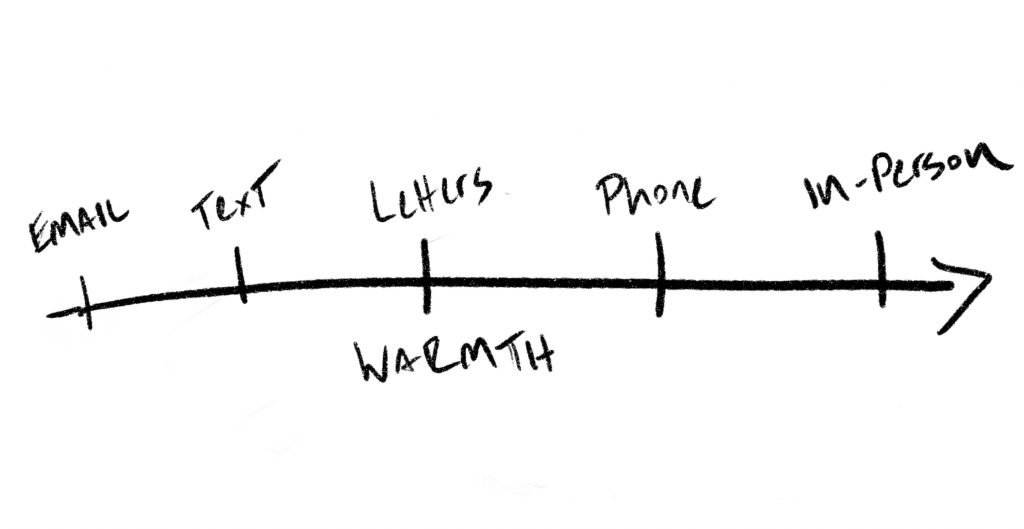
We might be tempted to conclude from this that those modes of communication lower on the list of warmth are, therefore, poorer modes and should perhaps be avoided that we might favor warmer modes of communication exclusively.
But there is another factor to consider about these communication modes. And that is that there is a relationship between the warmth of a communication method and its time-commitment.
Time-Commitment
A face-to-face conversation tends to have the highest time requirement. If you are meeting with someone, that often means scheduling an appointment in advance, traveling to the meeting, and the implied social requirement of being mostly “uninterruptable” for the duration of the meeting. Face-to-face ministry is valuable, so it makes sense that it is the most expensive in terms of time.
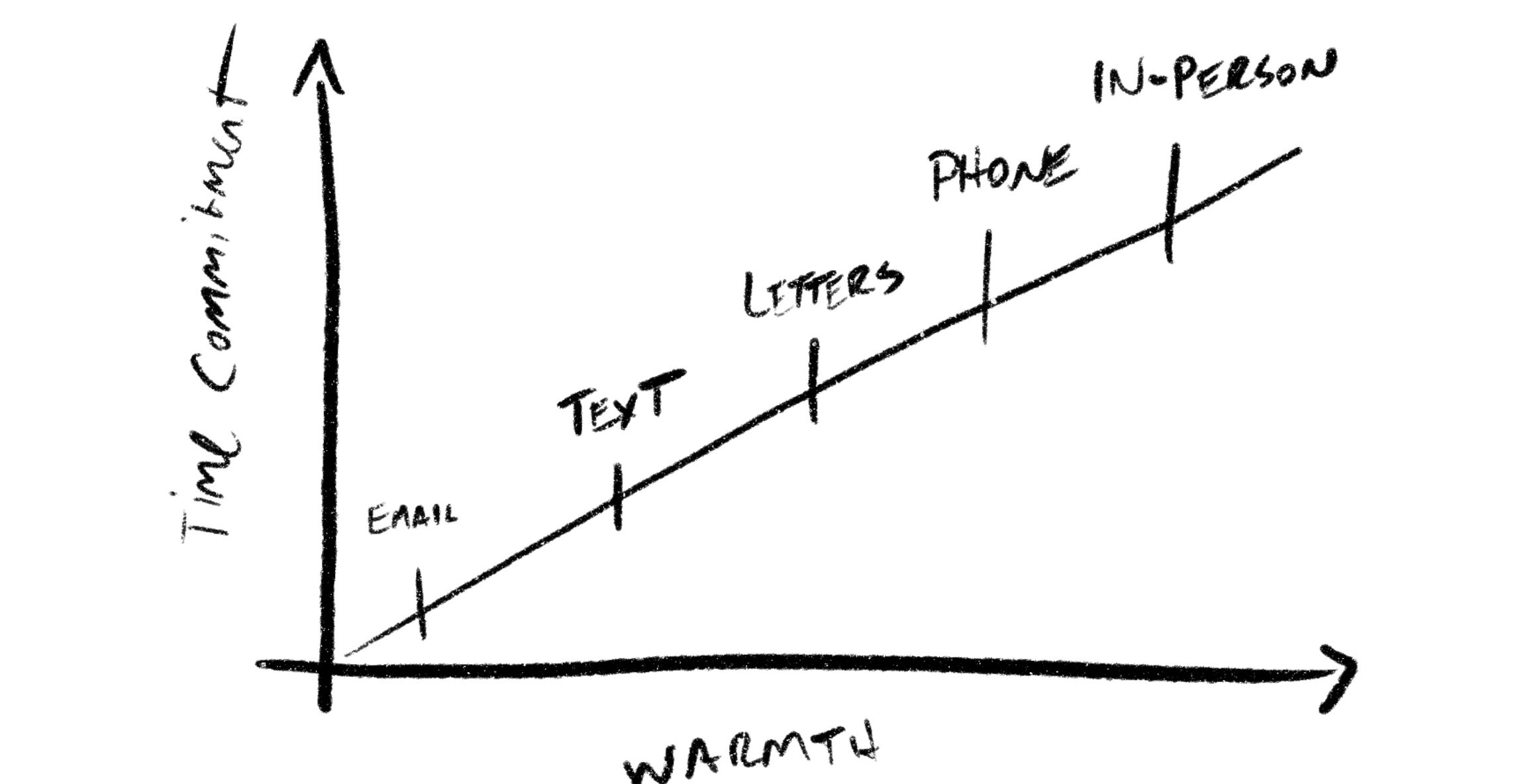
So, again, the issue here is not “should I participate in face-to-face ministry?” Of course you should. The problem is that realistically we only have time for so much face-to-face ministry—especially those of us who are not full-time ministers.
In terms of warmth, a phone or video call is a step down from an in-person meeting (these days of Covid-19 lockdowns have made this painfully clear). But they are warmer than a letter or text and require synchronous time-commitment.
Moving down the list, a handwritten letter or note is a more deliberate and, therefore, slower endeavor than a text or email. And it is warmer in that it has the marks of personality in the handwriting and its required deliberateness communicates care. “I can’t believe you took the time to write me a letter!”
And finally, A text or email can be fired off pretty quickly and require a much shorter time commitment. They are, however, less personal, and therefore less warm.
But, again, just because these lower forms of communication lack the same degree of warmth, that does not make them valueless. Less-personal communications modes can supplement (not replace) our in-person ministry and enable us to actually have a deeper overall impact on those we are seeking to love and minister to.
Now, let’s turn to applying these various methods of communication in a strategic manner that we might better encourage and minister to those God has put into our lives.
Organizing
So, with this understanding of the strengths and weaknesses of these various modes of communications, how can we develop a strategy for being more effective in how we minister to others through them?
Personal CRM
It all begins with a list.
Sales-focused businesses depend on their ability to foster a relationship with their customers. But when they have more than a handful of customers, it becomes impossible to remember the relevant information about each person. So, businesses have turned to Customer Relationship Management systems or CRMs.
A CRM is a simple database of information about a customer, past sales, and any relevant information that a salesperson might need to know when contacting them.
We aren’t selling anything in our personal ministry (at least I hope you’re not). But what if we used a “Personal CRM” to track the relationships in our lives? Could that make our personal ministry more effective?
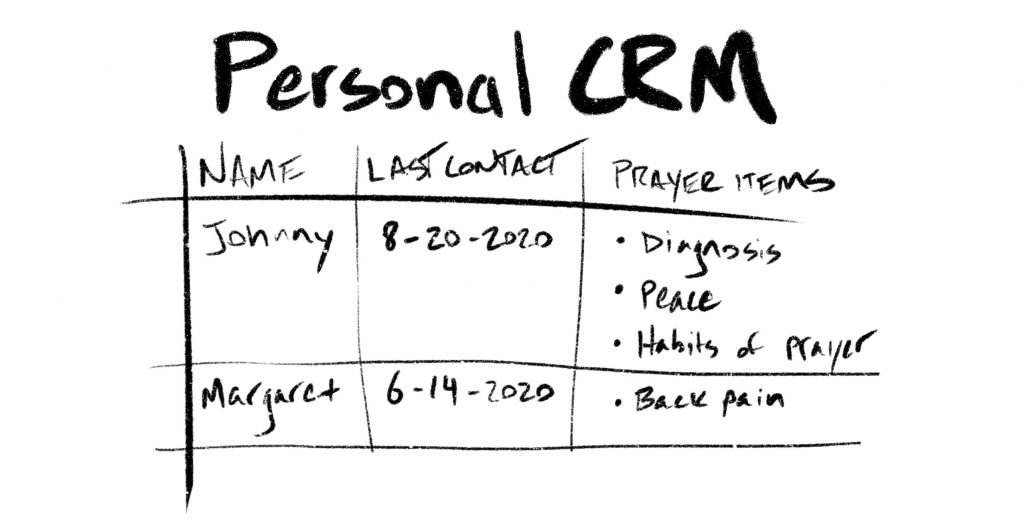
Using a personal CRM, you can keep track of the last time you called your sister, her prayer requests, and pertinent updates. This is much like how a business uses a CRM, it helps keep our memories straight and prevent people from falling through the cracks.
But unlike a business our purpose in using a CRM is not to sell to our friends and family, it is to better be able to minister to their needs and to help us avoid that all-too-common situation where you suddenly realized you haven’t talked to someone in months or even years!
A personal CRM can be as simple as a piece of paper, an Excel document, or a table in a note-taking app like Notion. In this video clip starting at 6:12, you can see how I manage my personal CRM using the note-taking app Notion.
Planning for Conversation
You will find that your ministry of conversation and correspond will complement your prayer ministry and vice versa. These are two sides of the same coin of personal ministry. Sometimes you can even be God’s means of answering your own prayers. Fred for encouragement, You prayed for it, then on Monday, you send Fred an encouraging text.
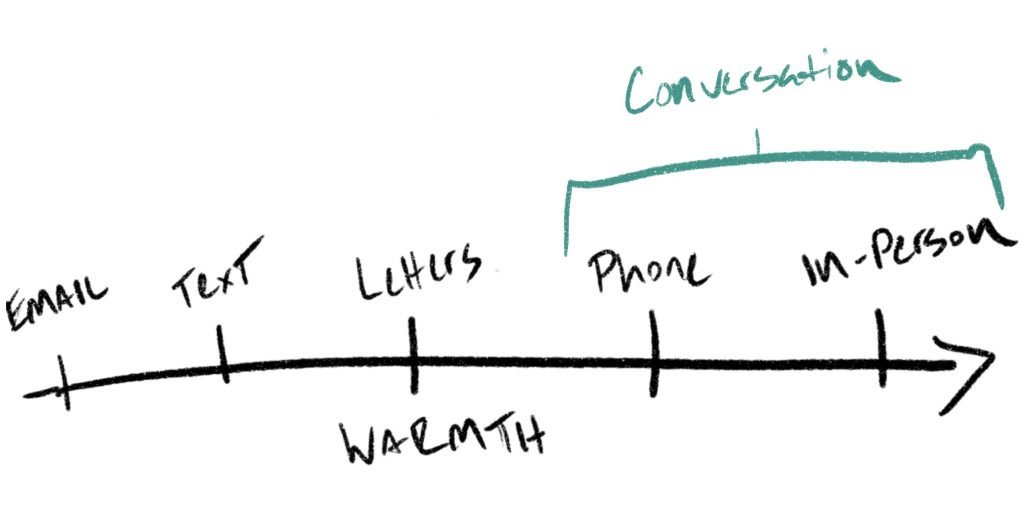
If you want to stay in consistent communication with others and are not naturally a people person (guilty!), it makes sense to plan for these points of contact.
The point isn’t to make it complicated, but to have a reliable plan for personal ministry
Since face-to-face meetings are the best type of ministry communication. Begin by making a plan for who in your CRM you want to have these appointments with, and how often you will try to have them. Be realistic. Maybe have a day in your week that you block out for these. For example, every Wednesday you want to have lunch with someone on your list. Block it into your week and schedule appointments with people for these times. Be proactive to reach out and fill these time slots in advance each week.
Do the same with phone calls. Make a plan for who you’ll call on your commute home from work. Block out a time slot or two on your calendar each week that you’ll dedicate to making phone calls. Then just work your way through the names on your personal CRM.
The point isn’t to make it complicated but to have a reliable plan for personal ministry.
Planning for Correspondence
Next, plan for your correspondence—texts, emails, and written letters.
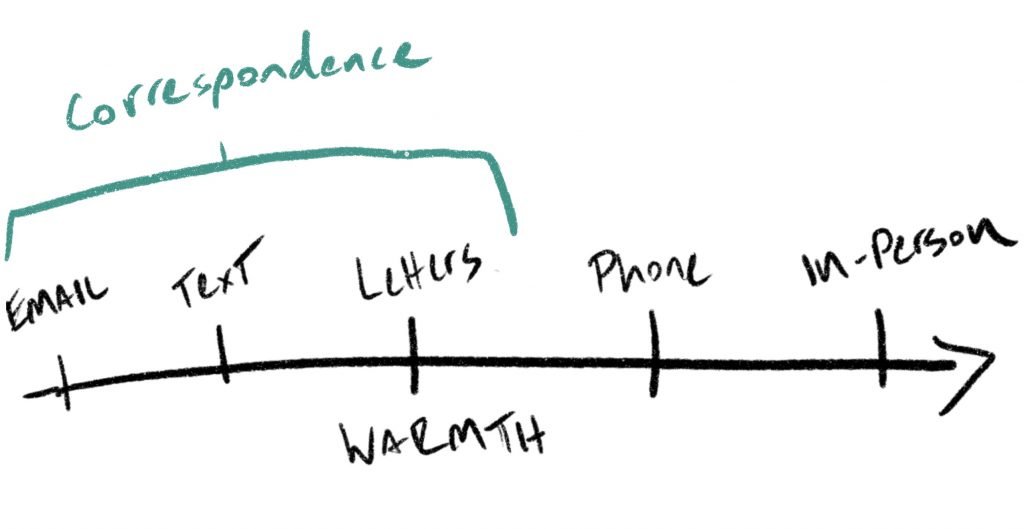
The great thing about these mediums is that you can chunk them together. You can write a bunch of texts, emails, or letters in one sitting. These will be the most frequent form of communication you will use in your personal ministry.
For example, if you keep a prayer list why not commit to sending an encouraging text to everyone you pray for that day? Just keep it simple, “Was praying for you about X this morning. Hope you have a great day!” Then just update your personal CRM with that latest contact so in the future you can remember the last time you spoke.

I’m a believer in old-fashioned letter writing. But since these are a bigger time commitment, I’d recommend prioritizing letter-writing for people on your list who will most appreciate them. That would tend to be older saints, especially the sick and the sad. You wouldn’t believe how encouraging a hand-written letter can be for a home-bound saint or someone grieving over the loss of a loved one. Birthdays make another appropriate occasion for a hand-written letter.
Choose your own adventure on this one. But remember this: the main point is to make a plan. A good intention is a fleeting thing, a specific plan on paper will lead to action. So, if this is a type of communication ministry you want to participate in, make sure you pick a time in your week to write these letters.
Conclusion
Think of the ministry impact you could have if you just dedicated a few hours a month, strategically planned, to a deliberate ministry of communication and correspondence. My how our relationships would deepen and our churches grow!
Begin by setting some simple goals—I want to meet with one person a week, send three texts a day, and write two letters. Then just start matching your plan up with people from your personal CRM or prayer list. Start small and let your ministry grow as you get the hang of it.
A new commandment I give to you, that you love one another: just as I have loved you, you also are to love one another. By this all people will know that you are my disciples, if you have love for one another.
John 13:34–35

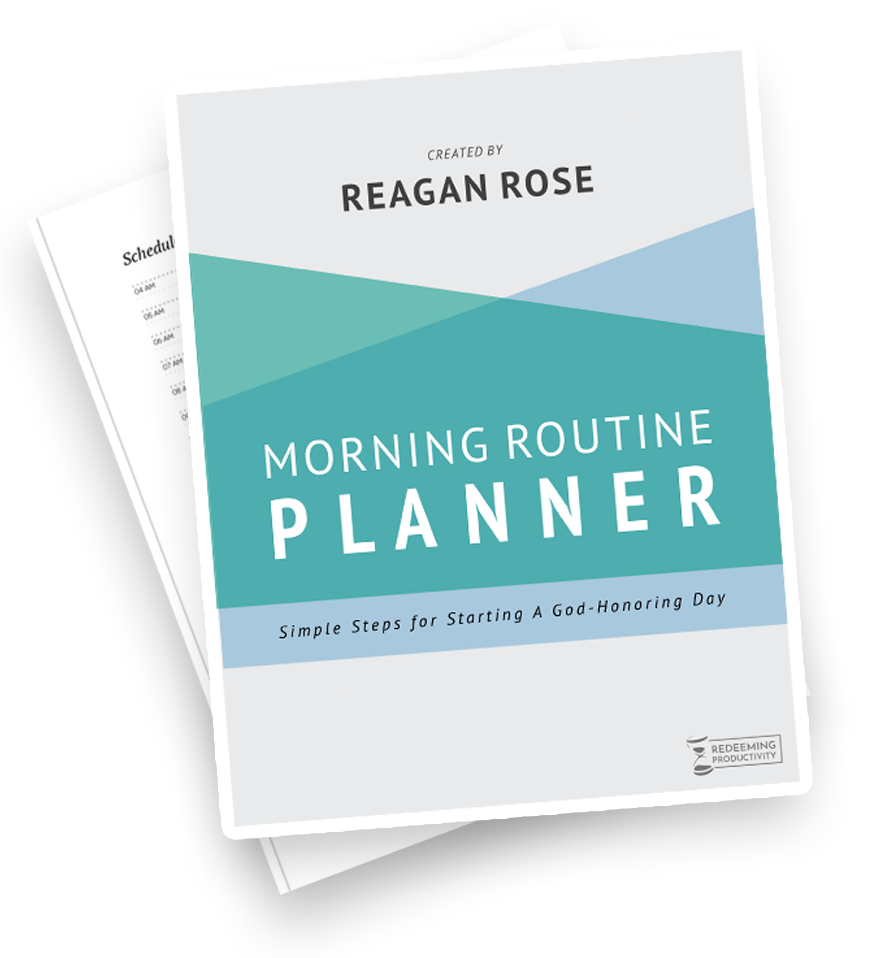
Reagan, this is a terrific blog post, thank you! Thanks for taking the time to write this all down for us. Super helpful.
One thing I’ve started to do is become a “street preacher” on LinkedIn. :) Every time a sales person reaches out to me on LinkedIn to try to sell me something, I message them back with the message below. I cross-sell them on Jesus! :) I’ve had some interesting replies, some Amens, and some ignore me. Nothing antagonistic yet, but I’m sure that will come up some day. Here’s the message I send to men who reach out out to me on LinkedIn: (for women who reach out I change the book link)
===
Thanks, _____ I am glad to be connected on LinkedIn!
Below are 3 links I share with every man that reaches out to me on LinkedIn, to encourage you in your walk with God. God is good. All the time.
1. Book: https://www.amazon.com/dp/1433561301/
2. Movie: http://www.americangospelfilm.com/
3. Website: https://www.oneyearbibleblog.com/
I hope these 3 links are a blessing to you. God loves you and has a wonderful plan for your life and your eternity! -Mike
Mike,
Thanks for the feedback.
I love your idea of being a street preacher on LinkedIn! Thanks for sharing that. I think I’ll start doing something similar.
Blessings!
Reagan, thanks for your wisdom… I listened a few days ago on my commute so I may have misremembered. Did you say you had a link to how to use notion to link contacts to a prayer lists? Or was that forthcoming?
Hey James, that’s still forthcoming. I’m working on a video. Hoping to have it out next week.
Hi Brother Reagan,
I’m sorry I didn’t get to see you before you guys left. I continue to listen it your podcasts so I know you are doing well. I read this post and I am wondering which video you make the connection between this and prayer lists.
Where is this video? I’ve been looking at trying to transfer from Evernote to Notion. Any guidance would be helpful.
This is a good overview of transferring Evernote into Notion: https://www.keepproductive.com/blog/evernote-importer-notion